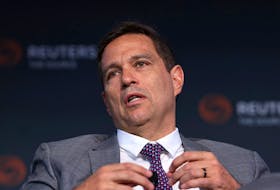Globally, Canada is probably best known for its maple syrup reserves, its passion for ice hockey and the multicultural mosaic that make up the population from coast to coast to coast.
But in the global financial community, Canada is widely recognized for having one of the world’s most successful and solid national pension funds, as managed by the Canada Pension Plan Investment Board (CPPIB).
If you didn’t know such an entity existed, don’t feel bad. An overwhelming number of Canadians are in the same boat.
“Unprompted, only about three per cent of people in the country know who we are, which, again, is amazing to me given how well we are known in the financial community and how well we are known around the world,” Mark Machin, CPPIB president and CEO, says of a survey conducted last year.
Tackling the unintentional ignorance about an investment organization at arm’s length from governments that manages and invests a fund worth over $300 billion on behalf of 20 million Canadians is part of the reason why Machin and the CPPIB are on a protracted cross-country speaking tour.
But most importantly, the CPPIB is keen to get out and tackle another troubling statistic that emerged from its most recent survey: 67 per cent of Canadians don’t believe the fund will be there for them when they retire.
Machin says that fear is primarily rooted in two things: headlines from around the world warning of potential pension crises and trepidation lingering from the 1990s, when the chief actuary signalled to government that the fund was in danger of going broke.
(The latter ended up being the impetus for the creation of the CPPIB.)
“Ignore all that noise,” says Machin. “Canada’s on a really sound footing.”
In 2016, the chief actuary published a pair of reports that suggested the fund is sustainable over 75 years and that invested funds will make a 3.9 per cent return over inflation and the actual rate of return over inflation over 10 years is 5.7 per cent.
“The returns are much better than expected and much better than we’re required to make sure we’re sustainable.”
There will be bad years within that, Machin says, but the fund is structured to be able to withstand it. In 2009, for instance, the fund lost about 18.8 per cent of its value, but six years later was up 18.3 per cent.
“We anticipate one year in 10 we’ll be down at least 12 per cent. When you see that number, people shouldn’t be afraid by that headline. That’s deliberate risk. It’s designed to take that amount of volatility and grow over time.”
Moreover, Machin says people needn’t worry about the federal government dipping into the CPP coffers in the event of a financial crisis.
“We have an act in Parliament that was put in place that established us and established the protection around this money,” he says.
“To change the act requires two-thirds of the provinces accounting for two-thirds of the population. It’s a very high bar.”
The CPPIB survey also indicated nearly half of Canadians expect to rely on CPP to a greater extent in their retirement.
But as strong as the CPP is, Machin suggests Canadians need to know it’s not enough on its own, even with the enhancement legislation passed in the House of Commons last spring that will see a gradual increase of contribution rates between 2019 and 2025 that is expected to increase benefits from 25 per cent of pre-retirement income to 33 per cent.
“The key message is that the CPP is going to be there for you in the $14,000 to $20,0000 range. Then people should have the confidence to plan on top of that,” Machin. “Once you know you have a rock-solid base, people can seize that opportunity and plan a little more retirement saving on top of that.”
Twitter: kennoliver79









